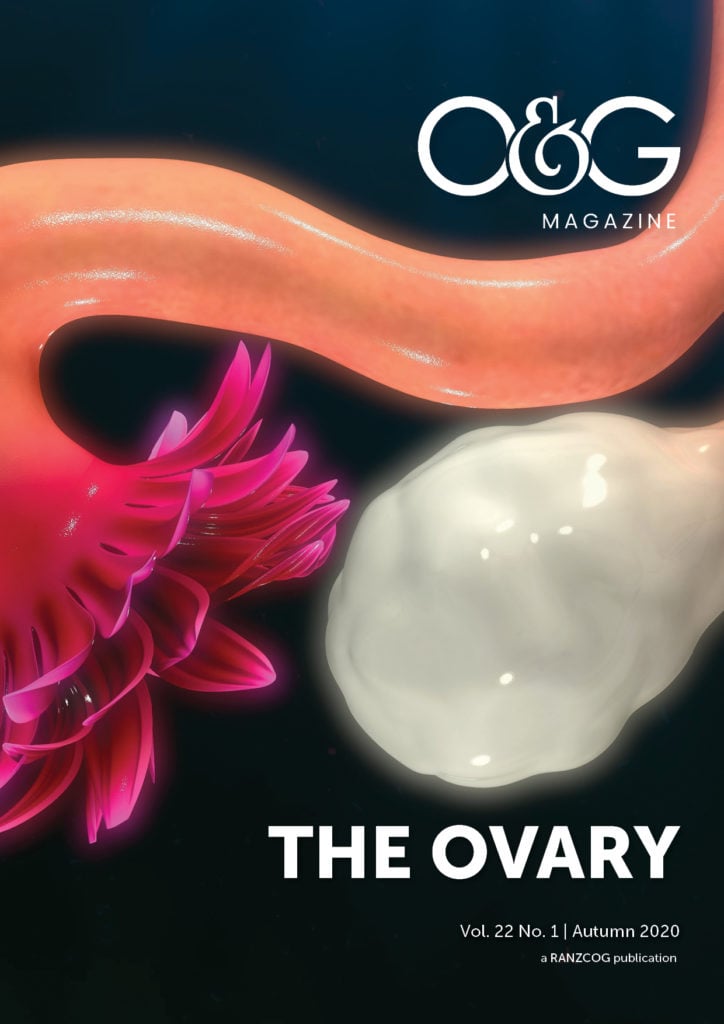Endocrine disrupting chemicals (EDCs) are agents that may interfere with the production, secretion, metabolism, action and the excretion of hormones within the body. The most widely recognised are bisphenol A (BPA), and metabolites of the phthalate diesters. These agents have been prevalent within the environment for decades; however, it is only recently that their potential for harm has been widely acknowledged. For instance, the European Food Safety Authority banned the use of BPA in baby bottles in 2011 and restricted the use of phthalates. BPA is widely used in plastics and epoxy resin and confers on plastics an exceptional strength and stability on heating. Phthalates are a class of chemicals that are widely used in industry, household goods and personal care products (such as makeup and hairspray) and possess EDC properties.1
There are believed to be in excess of 800 chemicals within the environment that may possess some endocrine disrupting or modulating effects, and consequently, it is impossible to avoid exposure. Indeed, one study of phthalates suggested that 95 per cent of participants analysed in a study in the US had measurable levels of phthalates, and BPA, in their urine. EDCs can enter the body through the skin, via inhalation, and commonly within food. Consequently, we are constantly exposed to EDCs, which may have synergistic actions with other EDCs, and their effects do not follow typical dose response curves; hence, they may be agonistic and antagonistic at the same receptor at differing concentrations and may have their maximal effects at very low concentrations. Measurable levels of phthalates and BPA are not only detectable in serum and urine, but also breastmilk, cord blood and amniotic fluid. This suggests the fetus, and the newborn, are at risk of exposure and in some instances, may receive greater exposure than the parents. Evidence from human epidemiological studies, collected by the WHO, link EDCs with a wide variety of health effects such as reproductive, neurobehavioral and neurodevelopmental changes, metabolic syndrome, bone disorders, immune disorders, and cancers;2 although, whether these are causal effects or associations is not clear from observational data.
In recent times, there has been an increasing awareness of the potential for the environment to affect reproductive health. An example of the concern that these chemicals have generated is the conflicting evidence regarding the belief that sperm counts have been diminishing over the last few decades. Despite it not being clear whether sperm counts are decreasing, it is established from registries that the incidence of undescended testis, hypospadias and testicular cancer, are increasing in some countries. These clinical findings are believed to have a potential unifying early-life origin related to a lack of fetal androgenisation. Evidence from animal studies suggest that if oestrogenic EDC exposure was to occur during a vulnerable period of male fetal development, correlating to human 8–14 weeks of gestation, a lack of male androgenisation may ensue, characterised by a shorter anogenital distance (AGD), impairment of sperm production, hypospadias and cryptorchidism.3
Reproductive effects of BPA exposure
Unconjugated BPA binds as a weak agonist at the oestrogen receptors, and evidence from animal studies suggest that in-utero exposure to environmental concentrations of BPA may impair adult spermatogenesis, leading to reductions in semen parameters and serum testosterone.4 Adult exposure leads to a central hypogondal picture, with testicular damage and impaired semen parameters.5 Human studies of prenatal exposure to EDCs are challenging due to the inherent difficulties of long-term follow-up studies, and the complicating fact that we are exposed to numerous EDCs at any one instant, compounded by exposures over a lifetime. Hence, deriving associations from a particular agent is problematic.
As AGD is now a recognised marker of prenatal androgenisation,6 with a longer AGD being a marker of greater prenatal androgen exposure, this offers a potential approach to assess prenatal androgenisation. A Chinese study showed that boys (whose mothers had detectable levels of BPA in their urine at 12–16 weeks of gestation) were more likely to have shorter AGD than boys with undetectable levels of maternal BPA.7 A further study demonstrated an inverse relationship between cord blood BPA concentrations and male newborn anoscrotal distance, suggesting a potential loss of androgenisation from fetal BPA exposure.8
With respect to deriving associations of in-utero exposures to BPA with adult male reproductive function, we recruited men from the Raine cohort at 20 years of age to undergo a thorough testicular assessment.9 The result of the analysis after adjustment interestingly demonstrated that maternal BPA exposure, from stored maternal blood, was positively associated with some of their sons’ sperm parameters in adulthood. These may be chance findings, in view of the lack of any other associations being identified with testicular volume or any hormone measured. Human studies relating concurrent exposure to BPA with semen parameters have been conflicting, although most studies suggest a negative influence on male reproductive parameters.10
The data on female exposure to BPA is less clear. BPA exposure has been associated with the development of endometriosis and PCOS, and adverse outcomes for women undertaking IVF treatment, although no long-term studies have been performed.11
Reproductive effects of phthalate exposure
Studies in humans and rodents have demonstrated that male newborn AGD was negatively associated with maternal phthalate exposure during pregnancy, suggesting a reduction in prenatal androgenisation.12 Subtle associations have been demonstrated between phthalate monoester concentrations in breastmilk and reproductive hormones in three-month-old boys.13 Our analysis of men within the Raine Study suggests a potential negative association of antenatal exposures to phthalate metabolites on adult testicular function, with a reduction in testicular volume and an increase in serum testosterone concentration in adulthood.14 Although our findings are of borderline significance, and our study is small, they are plausible and consistent with numerous experimental data.
With respect to female reproductive outcomes, concurrent urinary phthalate concentrations have been associated with girls with premature thelarche, and women with endometriosis – findings consistent with an oestrogenic influence, and an increased time to conception, reductions in serum Anti-Müllerian hormone (AMH) and less oocytes being retrieved in an IVF cycle.15 However, limited data exist with respect to any associations of antenatal exposure to phthalate metabolites on adult female reproductive outcomes. When we performed a reproductive assessment of girls within the Raine cohort at 15 years of age, and related the measures to maternal serum phthalate concentrations, maternal metabolite MCiOP was positively associated with her daughter’s uterine volume, MEP was negatively associated with her daughter’s antral follicle count and AMH, and there was a tendency towards an earlier menarche in relation to exposure to DEHP metabolites.16
Conclusion
EDCs are ubiquitous within the environment, so preventing our exposure to them is impossible; however, it is important to take steps to minimise our exposure to EDCs, and this is particularly relevant at vulnerable stages of development, during pregnancy and when attempting to conceive. Due to the limitations of space, this review was limited to BPA and phthalates, the most widely recognised EDCs, although many more chemicals exist in the environment that may influence reproductive development.
References
- Gore AC, Chappell VA, Fenton SE, et al. EDC-2: The Endocrine Society’s Second Scientific Statement on Endocrine-Disrupting Chemicals. Endocr Rev. 2015;36(6):E1-E150.
- Bergman A, Heindel JJ, Jobling S, et al. State of the science of endocrine disrupting chemicals – 2012. UNEP and WHO, 2013. Available from: www.who.int/ceh/publications/endocrine/en/.
- Welsh M, Suzuki H, Yamada G. The masculinization programming window. Endocrine Development. 2014;27:17-27.
- Cariati F, D’Uonno N, Borrillo F, et al. Bisphenol a: an emerging threat to male fertility. Reprod Biol Endocrinol. 2019;17(1):6.
- Cariati F, D’Uonno N, Borrillo F, et al. Bisphenol a: an emerging threat to male fertility. Reprod Biol Endocrinol. 2019;17(1):6.
- Dean A, Sharpe RM. Clinical review: Anogenital distance or digit length ratio as measures of fetal androgen exposure: relationship to male reproductive development and its disorders. J Clin Endocrinol Metab. 2013;98(6):2230-8.
- Sun X, Li D, Liang H, et al. Maternal exposure to bisphenol A and anogenital distance throughout infancy: A longitudinal study from Shanghai, China. Environ Int. 2018;121(Pt 1):269-75.
- Mammadov E, Uncu M, Dalkan C. High Prenatal Exposure to Bisphenol A Reduces Anogenital Distance in Healthy Male Newborns. Journal of Clinical Research in Pediatric Endocrinology. 2018;10(1):25-9.
- Hart RJ, Frederiksen H, Doherty DA, et al. The Possible Impact of Antenatal Exposure to Ubiquitous Phthalates Upon Male Reproductive Function at 20 Years of Age. Frontiers in Endocrinology. 2018;9:288.
- Tomza-Marciniak A, Stepkowska P, Kuba J, Pilarczyk B. Effect of bisphenol A on reproductive processes: A review of in vitro, in vivo and epidemiological studies. Journal of Applied Toxicology. 2018;38(1):51-80.
- Tomza-Marciniak A, Stepkowska P, Kuba J, Pilarczyk B. Effect of bisphenol A on reproductive processes: A review of in vitro, in vivo and epidemiological studies. Journal of Applied Toxicology. 2018;38(1):51-80.
- Swan SH, Main KM, Liu F, et al. Decrease in anogenital distance among male infants with prenatal phthalate exposure. Environ Health Perspect. 2005;113(8):1056-61.
- Main KM, Mortensen GK, Kaleva MM, et al. Human breast milk contamination with phthalates and alterations of endogenous reproductive hormones in infants three months of age. Environ Health Perspect. 2006;114(2):270-6.
- Hart RJ, Frederiksen H, Doherty DA, et al. The Possible Impact of Antenatal Exposure to Ubiquitous Phthalates Upon Male Reproductive Function at 20 Years of Age. Frontiers in Endocrinology. 2018;9:288.
- Gore AC, Chappell VA, Fenton SE, et al. EDC-2: The Endocrine Society’s Second Scientific Statement on Endocrine-Disrupting Chemicals. Endocr Rev. 2015;36(6):E1-E150.
- Hart R, Doherty DA, Frederiksen H, et al. The influence of antenatal exposure to phthalates on subsequent female reproductive development in adolescence: a pilot study. Reproduction. 2014;147(4):379-90.






Leave a Reply